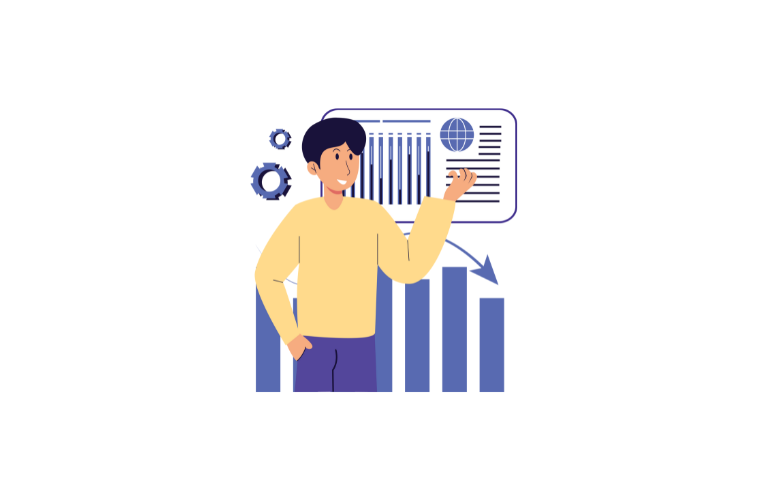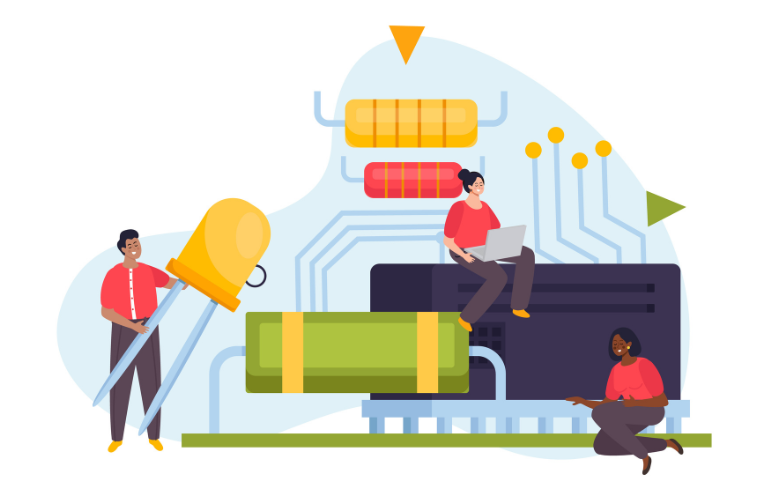As the AI market is projected to reach a staggering $190.5 billion by 2032, mastering Implementing AI-Driven Features in Laravel is more important than ever for developers aiming to stay ahead of the curve.
Artificial intelligence (AI) is revolutionizing industries, and web applications are no exception. Businesses increasingly leverage AI-driven features to enhance user experiences, streamline operations, and gain competitive advantages. Laravel, known for its robust architecture and developer-friendly ecosystem, provides an excellent platform for integrating AI capabilities.
Table of Contents
Why Choose Laravel for AI Integration?
Laravel’s features make it an ideal choice for embedding AI functionalities into web applications. Let’s explore why:
1. Robust Architecture
Laravel’s Model-View-Controller (MVC) structure simplifies the integration of complex AI algorithms:
- Separation of Concerns: Ensures that AI logic doesn’t interfere with the application’s user interface or business logic.
- Eloquent ORM: Streamlines database interactions, which is critical for training and deploying AI models.
- RESTful API Support: Built-in tools make it easy to connect Laravel apps with external AI services.
2. Extensive Ecosystem
Laravel’s thriving ecosystem supports seamless AI integration:
- AI Packages: Availability of libraries for tasks like natural language processing and predictive analytics.
- Community Support: Access to tutorials, forums, and open-source projects for quick troubleshooting.
- Regular Updates: Ensures compatibility with modern AI tools and best practices.
3. Scalability and Performance
- Queue Management: Handles resource-intensive AI tasks asynchronously.
- Caching Support: Speeds up data processing and API responses.
- Cloud Integration: Effortlessly connect with AWS, Google Cloud, or Azure for scalable AI solutions.
Implementing AI-Driven Features in Laravel
1. Natural Language Processing (NLP)
Enhance your application with features like sentiment analysis, chatbots, or text summarization. Here’s a simple example:
class NLPService {
protected $nlp;
public function __construct() {
$this->nlp = new NLTK(); // Hypothetical NLP package
}
public function analyzeText($text) {
$tokens = $this->nlp->tokenize($text);
return $this->nlp->analyze($tokens);
}
}2. Image Recognition
Integrate advanced image processing using tools like:
- TensorFlow for creating custom models.
- Google Cloud Vision for powerful pre-trained models.
- Intervention Image for simpler image manipulation needs.
3. Predictive Analytics
Use predictive models to anticipate user behavior, forecast sales, or reduce churn rates. These insights empower businesses to make data-driven decisions.
Step-by-Step Implementation
1. Define AI Requirements
Start by identifying specific features you want, such as chatbot support, recommendation engines, or fraud detection. Assess data quality, volume, and the computational resources required for AI tasks.
2. Set Up Your Laravel Project
Begin with a fresh Laravel installation:
composer create-project --prefer-dist laravel/laravel ai-applicationThen, add AI libraries:
composer require tensorflow/tensorflow intervention/image3. Data Preparation
Data is the backbone of AI applications. Ensure:
- Collection: Gather high-quality data.
- Cleaning: Normalize, validate, and filter data to avoid biases.
- Storage: Use optimized databases for efficient retrieval.
4. Model Integration
Integrate AI models using libraries or cloud-based services. Example with TensorFlow:
use TensorFlow\Tensor;
use TensorFlow\Lite\Interpreter;
class AIModelService {
protected $interpreter;
public function __construct() {
$this->interpreter = new Interpreter('path_to_model.tflite');
}
public function predict($input) {
$inputTensor = $this->interpreter->getInputTensor(0);
$inputTensor->setData($input);
$this->interpreter->invoke();
return $this->interpreter->getOutputTensor(0)->getData();
}
}5. Optimize Performance
AI computations can be resource-intensive. Leverage:
- Background Jobs: Offload tasks using Laravel queues.
- Caching: Use Redis or Memcached for temporary data storage.
- Cloud Services: Offload heavy computations to cloud platforms.
Best Practices for AI Integration in Laravel
1. Prioritize Security
- Encrypt sensitive data.
- Use robust authentication and authorization.
- Implement rate limiting for API endpoints.
- Regularly audit your application for vulnerabilities.
2. Monitor AI Models
- Continuously evaluate model performance.
- Set up logging and monitoring for anomalies.
- Regularly update models to reflect changing data patterns.
3. Improve Scalability
- Use cloud-native solutions for dynamic scalability.
- Optimize database queries to handle large datasets.
- Employ efficient AI algorithms to minimize server load.
Emerging Trends in AI-Laravel Integration
1. PHP AI Libraries
The PHP ecosystem is expanding its support for AI with libraries tailored for Laravel.
2. Ethical AI Practices
Embrace responsible AI by focusing on:
- Transparency: Make AI decision-making processes explainable.
- Privacy: Ensure compliance with GDPR and other data regulations.
3. Serverless AI Solutions
Cloud providers are increasingly offering serverless AI tools, enabling developers to run models without managing infrastructure.
Conclusion
Laravel’s developer-friendly features, coupled with its extensive ecosystem, make it a top choice for implementing AI-driven functionalities. By following a structured approach—from defining requirements to deploying and monitoring AI models—you can create web applications that deliver intelligent, efficient, and engaging user experiences.
Stay updated with Laravel and AI trends to keep your applications ahead of the curve. Whether it’s natural language processing, image recognition, or predictive analytics, Laravel has the tools you need to bring your AI vision to life.




